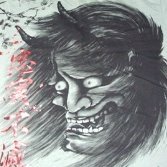-
Recently Browsing 0 members
- No registered users viewing this page.
Announcements
-
Topics
-
Latest posts...
-
1
Adventure trip turns perilous as ATV overturns in fast stream
An adventure was promised and the company delivered. -
36
-
9
Ever feel like walking naked?: Do you ever feel like walking down the road nude?
Yes. Everybody knows this. -
1
Promises of Change: How Much of Sir Keir Starmer’s Vision Was Rhetoric?
Just another,in a long line of English prime minister's that has let our country down. Life will never be the same again for millions of families in the UK. Our once safe country is now a shiit-hole of the highest order with rapes and stabbings the norm.Not too long ago a murder was front page news and now (unless it is multiple) hardly gets a mention. Who in their right mind would invite millions of fighting age men who at best don't like you and at worst want to harm you into their country.All Europe is the same. Consecutive governments have done this to our kids and grandkids,i fear for their future and weep. -
45
How-To: Import an AC from Japan. Logistics? Wish to buy Japan. And circumvent low quality.
OK. You want to know the truth? The Panasonic ACs made in Japan are just FING ......BETTER. Why should I state something that is not true? -
5,439
-
2,260
Thai gov. to tax (remitted) income from abroad for tax residents starting 2024 - Part II
can you name this channel? thanks ... -
35
Chinese man calls Thai women prostitutes sparking online outrage
he is one of the few English teachers that teaches Tinglish -
2
Hitler’s AI Translated Speeches Go Viral on TikTok in Troubling Trend
Don't worry, the videos will flourish on Elons Twitter. Might even get a retweet from the man himself. -
-
159
Trump Too Scared To Debate Harris Again
Well you made the claim how bout a few sources for someone who wasn't paying attention. 😅 -
35
Chinese man calls Thai women prostitutes sparking online outrage
Can’t blame them ..in case you don’t know - the internet WeChat in Bangkok is filled with Thai woman who advertise their trade from massage to outright sex .. n renting of girlfriends ..all pitched to Chinese tourists - and all at crazy prices .. probably there is indeed a Chinese market for sex and the Chinese tourists all do sex tours to Thailand -
23
Floodwaters Match 2011 Levels, but a Disaster Is Unlikely This Year: Anutin
It looks like the city center is uphill from the Ping river. -
6
Your opinion on leasing ? Why isn’t more popular ? It offers some kind of certainty
@Franck60 What are you talking about? I assume you are talking about a car? Renting and leasing are not the same12. Here are some differences between the two: Leasing contracts have two parties – lessor and lessee. A rental agreement has two parties as well – landlord and tenant. Leasing is usually done for assets/equipment. Renting is mostly done for properties or lands. In leasing, the servicing and maintenance are done by the lessee when s/he takes the equipment on lease. In renting, on the other hand, the servicing and maintenance are done by the landlord even if the tenant takes the property on rent. The critical difference between lease and rent is their duration. Whereas a leasing remains valid for the period specified in a formal agreement (typically one year), a rental agreement could cover a short-term period for month-to-month stays or vacation rentals. -
27
Effects of ingesting THC Cannabis Oil versus Inhaling THC from Cannabis
So, how do you make that oil and how much weed do you need for it and how many drops do you take?
-
.png.3b3332cc2256ad0edbc2fe9404feeef0.png)







.thumb.jpeg.435f0fb7221c5dd6500feca45095b936.jpeg)


Recommended Posts
Create an account or sign in to comment
You need to be a member in order to leave a comment
Create an account
Sign up for a new account in our community. It's easy!
Register a new accountSign in
Already have an account? Sign in here.
Sign In Now